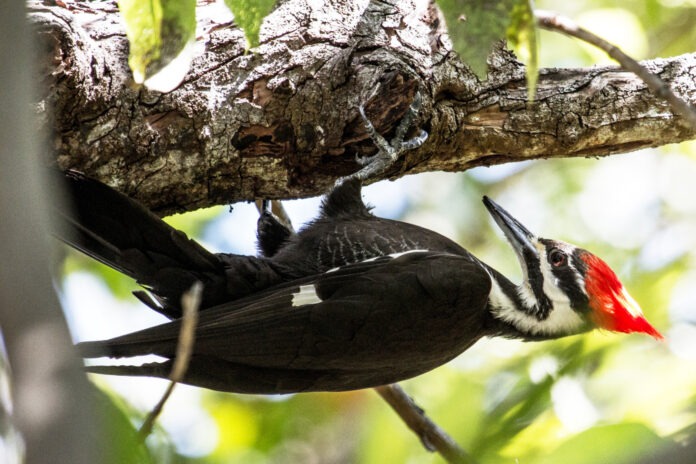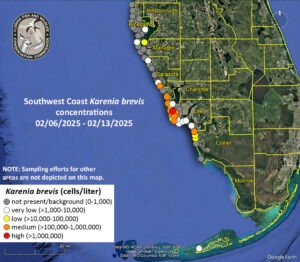
Why doesn’t North America have any big flightless bird? Africa has ostriches, South America has rheas, Australia has emus and cassowaries. Did we have a big, flightless bird that got hunted to extinction or did we just never have one? — Lalita (temporarily) of the West
Listen, the whole point of doing an Ask the Bird Geek column is to do what in journalism is called a quick and dirty – something you can crank out fast and off the top of your head, something low-effort for the holiday season. And now you’ve gone and made me do research and Google multiple things. What the hell, Lalita?
Thinking about it, there is a strong case to be made that North America was once actually heavily populated with flightless birds, or at least birds that couldn’t fly yet. By which I mean dinosaurs. Birds are the dinosaurs that lived.
But let’s talk about the post-archaeopteryx era, a.k.a. feathered bird era. Big flightless birds evolved in the southern hemisphere and for some reason rarely left it. It is hard to say why, but maybe North America just seemed like too far of a walk.
There actually was one species of big flightless bird whose skeletal remains were found in Texas and Florida called Titanis walleri, a member of the terrorbird – yes, terrorbird – family. The species was thought to stand 5 feet tall and weigh up to 300 pounds, and may have been an alpha predator or a scavenger.
The Florida Museum of Natural History has a small collection of their leg bones, as well as a metal scale likeness of the whole skeleton, on display.
While we humans have hunted quite a few species to extinction, you can’t pin the demise of the Titanic Terrorbird on us, as it died out about 1.8 million years ago.
We did also once have a species of flightless birds called the Great Auk here, which humans drove to extinction in the mid-1800s, but it stood less than 3 feet tall, so I don’t think you could call it big.
Why does the new woodpecker in our yard insist on hammering his beak into our metal roof? —Danny Who Is Not on Vacation
Woodpeckers are not dumb, despite smashing their faces into trees thousands of times every day. Woodpeckers hammer on metal roofs and poles and hollow logs for the same reason young – and sometimes not-so-young – men drive up and down the main drags of their hometown with the windows down: to attract females and intimidate other males. A male woodpecker announces his territory with sound. If you can hear it, you’re in their turf. A metal roof or pole or gutter for a woodpecker is like a P.A. system, a way to amplify sound as much as possible. Banging on that makes the sound carry farther, possibly enticing the ladies into thinking his territory is larger than it might be, and making the banger seem like a more fit mate. It also intimates to potential rivals that maybe it’s better to set up their territory a little farther away.
Is the Ivory-billed woodpecker extinct? — I. Noah Guy
Oh great, the third rail of ornithological debate. Thanks for making this easy. Did you not see the comment above about trying to have an undemanding, blow-off column?
Oddly enough, I’ve been reading a bit about quantum physics lately – not that I fully understand it – and the status of the ivory-billed woodpecker reminds me of the whole Schrödinger’s Cat thing.
For those who haven’t had it geeksplained to them before, Schrödinger’s Cat is a scientific paradox in which a theoretical cat is enclosed in a theoretical box with a vial of theoretical poison, which has a 50/50 chance of going off and killing the cat. But until the theoretical box is opened, it is impossible to know whether the cat is dead or alive, so therefore, as far as we know as observers, the cat simultaneously exists as both dead and alive.
The ivory-bill situation is something like that. The last accepted sighting of an ivory-billed woodpecker in the United States was in 1941 in what was known as the Singer Tract, a large patch of forest in Louisiana owned by the sewing machine manufacturer, who sold the logging rights to the Chicago Mill and Lumber Co., which cleared the tract despite having decent offers from multiple groups to buy it from them at a reasonable rate. They said it was to support the war effort, though the War Department said that it wasn’t really important, and the tract should be saved. The company also said it would be horrible to take jobs away from American workers at such an inopportune time, though the work of clearing the forest was actually done by German prisoners of war.
“We are just money grubbers,” the company’s chairman said. “We are not concerned, as are you folks, with ethical concerns.”
Richard Pough, who worked for the National Audubon Society at the time, and who went on to co-found the Nature Conservancy, was one of the last people to see an ivory-billed woodpecker in the U.S. He stood in freezing rain for six hours watching as the Chicago Mill and Lumber Co. closed in on the nest.
The ivory-billed woodpecker also lived in Cuba, though the last accepted sighting there was in 1987.
Note that I’ve been using the phrase “accepted sighting.” Which brings us to the Schrödinger woodpecker situation. While there have been no accepted sightings since those dates, there have been a number of alleged sightings without documentation, or with ambiguous documentation, in Florida, Arkansas, Louisiana and Texas. It has happened as recently as 2020.
People have produced recordings of their distinctive kent call, but blue jays sometimes make a similar sounding call, and blue jays are everywhere. People have produced recordings of their distinctive double wrap knocking sound, but the recording also sounded similar to the wing collisions of ducks flying in flocks. Also, in at least one instance, it was determined that the distinctive double knock was actually distant gunfire.
Ivory-billed feathers have been found in the hollows of trees, but it was impossible to say how old they were.
There have also been photos and short videos that the observers believed to be of living ivory-billed woodpeckers, but which critics contend are actually very similar-looking and still-very-much-extant pileated woodpeckers.
This sounds a bit like people seeing Bigfoot or the Loch Ness Monster, but most of these sightings come from credible field biologists who just haven’t been able to fully convince their peers.
You can say there is no evidence that something exists, but it is impossible to prove something doesn’t exist. Species thought extinct have been re-discovered in the past. Currently the ivory-billed woodpecker might be extinct. It also may still exist. And I think it will exist in those two opposing states simultaneously unless someone finds some very convincing evidence.























